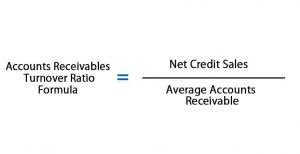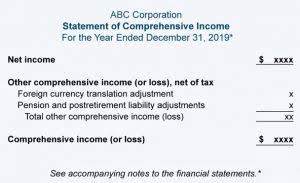
Let us understand the various ways and means to minimise and control this type of risk in business. Understanding the importance of risk management is crucial for any individual or organization… Control risk played a major part in the Enron scandal – audit risk model the people providing the misleading numbers were widely respected and some of the most senior people in the organization. The audits were thus being carried out on the wrong numbers and no one knew until it was too late to do anything about it. Quality Control Measures play a pivotal role in overseeing the audit’s progression, ensuring adherence to the highest standards of audit practice and compliance with regulatory requirements.
How To Reduce?

It is vital as the auditors must evaluate components and determine an appropriate level of audit procedures. By using the audit risk model, auditors can effectively plan and execute their audits. Auditors need to understand the client’s business, identify significant accounts and assertions, assess inherent and control risks, and determine the appropriate level of detection risk. By following these steps and conducting thorough audit procedures, auditors can mitigate the risk of issuing an incorrect opinion and provide reliable assurance on the financial statements.
Audit risk model example
The auditors then use the model to establish relationship between the risks and take action to reduce overall audit risk to an acceptable level. Detection risk arises because the auditor’s methods and procedures, to test balances and transactions for misstatements, fail to detect all the misstatements. Inherent risk comes from the size, nature and complexity of the client’s business transactions. The more complex business transactions are, the higher the inherent risk the client will have. When RMM is high, DR is set to low to keep audit risk at an acceptably low level. This means auditors perform more detailed tests to verify the account’s assertions.
Laying the foundation — what is a skills assessment?

Before running the formula, auditors will need to study the client’s business, including its daily operations and financial reporting procedures. They’ll also need to look at external factors like government policy and market conditions, as well as financial performance and management strategies. Auditors will also look at the client’s internal controls and risk mitigation procedures during this evidence gathering process. With a greater understanding of the controls and procedures put in place, auditors can then pinpoint the areas where risks are higher.
- The people at the accounting firm who failed to detect the many problems in Enron’s books were not paid off or bribed in any way – they genuinely failed to discover any major problems in Enron.
- It’s important to keep in mind that these financial statements aren’t always complete or accurate.
- In this regard, it is important to consider the fact that there are numerous risks that are involved during the audit process.
- Comprehensive training programs for auditors, focusing not only on technical skills but also on ethical considerations, are of paramount importance.
- The audit risk model states that audit risk is a function of RMM (which is made up of IR and CR) and DR.
- These conceptual tools play a crucial role in evaluating and managing the risks involved in performing audit engagements.
- In this case, auditors will not perform the test of controls on the bank reconciliation.
How to reduce Audit Risks?
However, there’s some level of detection risk involved with every audit due to its inherent limitations. This includes the fact that financial statements are created with a standard range of acceptable numerical values. Auditors usually make use of the relationship of the three components of audit risk to determine an acceptable level of risk. In this case, as they cannot change the level of inherent and control risk, they need to change the level of detection risk to arrive at an acceptable level of audit risk.
In the realm of auditing, the Audit Risk Model is a critical framework that guides auditors in their quest to provide reliable financial statements. This concept represents the susceptibility of financial statements to material misstatements, assuming no controls are in place. In simpler terms, it is the risk that a particular account or transaction could be inherently more prone to errors or fraud. Inherent risk varies across different industries and specific accounts, but it’s a vital factor in determining the overall audit risk. Detection risk is the risk that auditors fail to detect material misstatements that exist on the financial statements. The dynamic interplay between inherent risk, control risk, and detection risk under the ARM framework guides auditors in tailoring their audit approach.
Inherent risk is the risk that a client’s financial statements are susceptible to material misstatements in the absence of any internal controls to guard against such misstatement. Inherent risk is greater when a high degree of judgment is involved in business transactions, since this introduces the risk that an inexperienced person is more likely to make an error. It is also more likely when significant estimates must be included in transactions, where an estimation error can be made.
What is the relationship between audit risk and materiality?
Modern Audit Management Software is equipped with machine learning and AI capabilities. These technologies can predict potential risk areas, ensuring auditors pay special attention to them. Such tools can process vast amounts of data in seconds, highlighting discrepancies that might take humans hours to detect. Control Risk is the risk of Accounting Periods and Methods a material misstatement in the financial statements arising due to absence or failure in the operation of relevant controls of the entity.

However, it can really pave way for an even more damaging fraud risk, and therefore, this particular risk needs to be mitigated by companies at all costs. Audit risk models are used during the planning stages of an audit to help the team determine which procedures make the most sense. During the audit process, they’ll go through Bookkeeping for Painters the accounts and transactions listed on a company’s income statement, balance sheet, and cash flow statement.